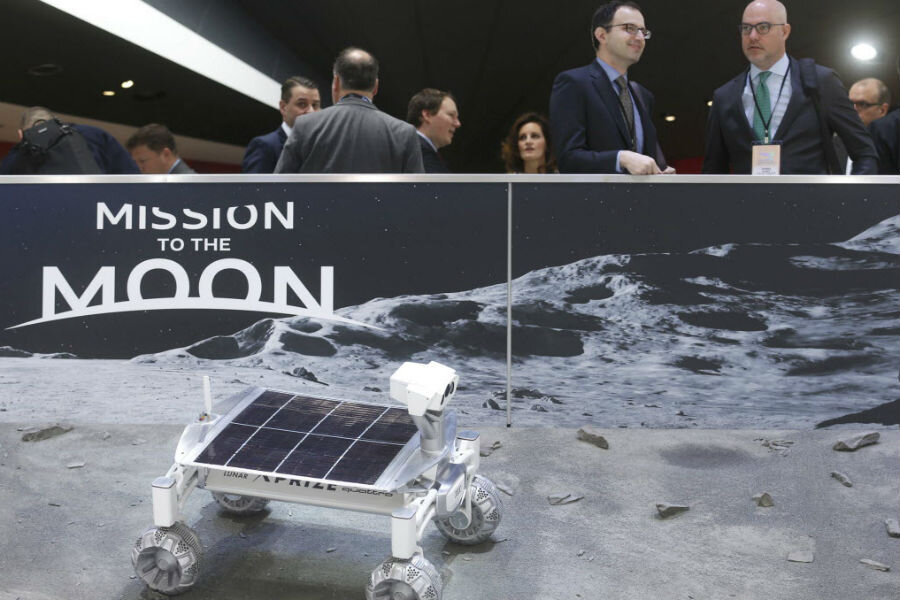Why Audi is backing a trip to the moon
Loading...
Forty-five years after the last humans traveled to the moon, a privately-funded Audi team is one of 16 racing to explore the site where Apollo 17 touched down. At stake: a $20 million payday – and innumerable advances for private space exploration.
The Berlin-based Part Time Scientists group announced on Tuesday that it had signed a contract to launch two rovers for a planned moon landing next year. The Audi Lunar quattro rovers are a collaboration between the international team of scientists and their industrial partners, principally Audi, a subsidiary of German automaker Volkswagen. The rover is scheduled to land 3 to 5 kilometers (2 to 3 miles) from the Apollo 17 landing site and is expected travel to within 200 meters (220 yards) of the site in order to send back high-definition images of the area, Deutsche Welle reported.
Google, which is sponsoring the competition, sees exploring the moon as an opportunity to make scientific and technological advances. The contest calls on companies like Audi to transfer their existing expertise to a new field, and underscores the potential for public-private partnership in space even as government-funded efforts dominate.
“The Moon is not only our nearest planetary neighbor, but it is also the gateway to the rest of the universe,” Google’s website describing the Lunar XPRIZE states. “The Moon provides exciting opportunities for discovery in the fields of science, technology, resource detection and utilization, and human habitation.”
NASA put the first astronauts on the moon in 1969. The final manned moon landing came with Apollo 17 in 1972. There has been renewed interest in traveling to the moon in recent years, with the European Space Agency, Russia's Roscosmos, and the China National Space Administration planning missions. NASA, too, may choose to return to the moon during the administration of President-elect Trump.
Google established the Lunar XPRIZE in 2007, with the aim of revisiting the Apollo 17 site and involving private organizations in the effort. The moon offers valuable opportunities to learn about the universe, and prepare for the journey to Mars that NASA and Space Exploration Technologies Corporation (SpaceX), among others, hope to take.
Public-private cooperation, the internet giant suggested, will lower costs of future space exploration by allowing private companies like Audi to repurpose the knowledge they already have. This builds upon the involvement of dedicated space companies like SpaceX and Axiom Space.
This has already allowed for advances in science and technology. Audi’s website reports that the company’s experience of “lightweight construction, electric mobility, permanent four-wheel drive and piloted driving” have allowed it to get involved in various areas of rover development: design, construction, and testing.
To help with its journey to the Apollo 17 site, the rover features an adjustable solar panel that will supply energy to a lithium battery; four wheel-hub motors; and three cameras. It also has off-roading abilities and reliable navigation, the company says.
Sixteen teams are developing rovers capable of traveling to the landing site and taking photographs of it. The first team to meet the challenge will win a $20 million grand prize.
A further $5 million in prize money is available for any team that goes above and beyond the challenge to make further scientific discoveries while on the moon surface. Perhaps with that in mind, the Audi team has planned a test for future 3D printing technology and will try to grow a plant in the lunar atmosphere, PTScientist rover driver Karsen Becker told New Scientist.
The Audi Lunar quattro rovers will take flight in late 2017 or early 2018.








